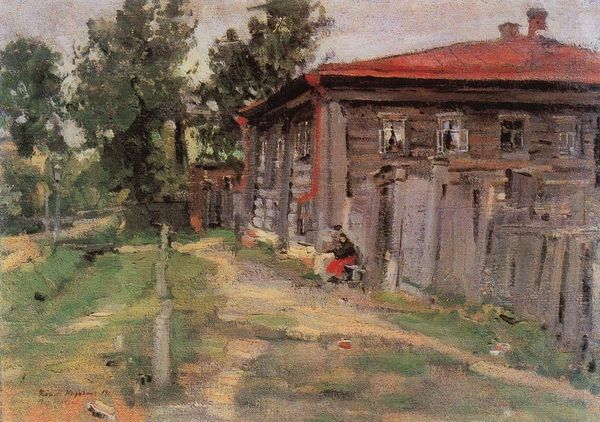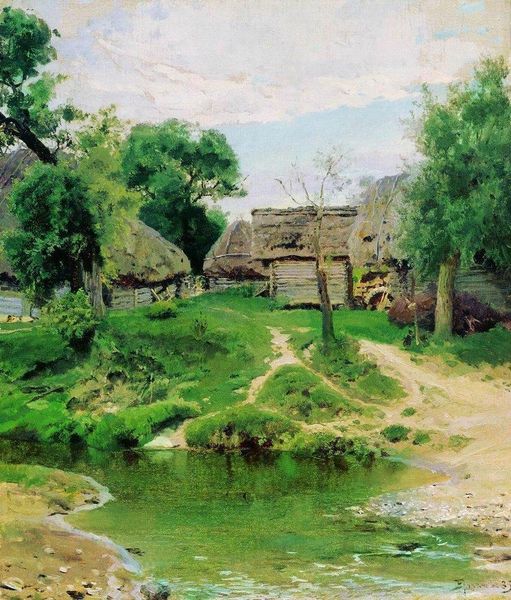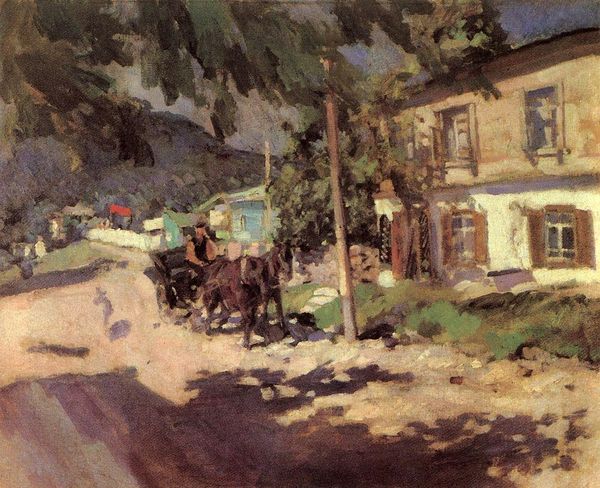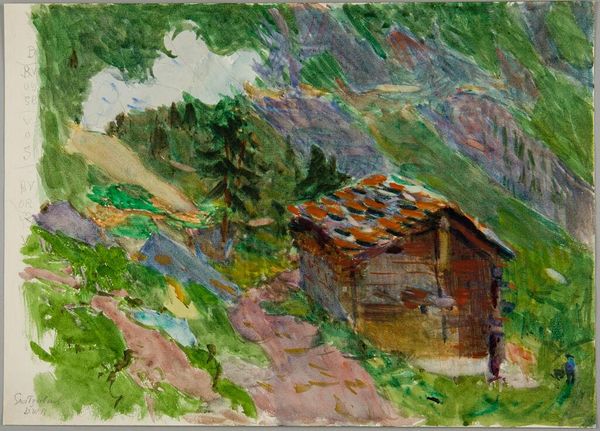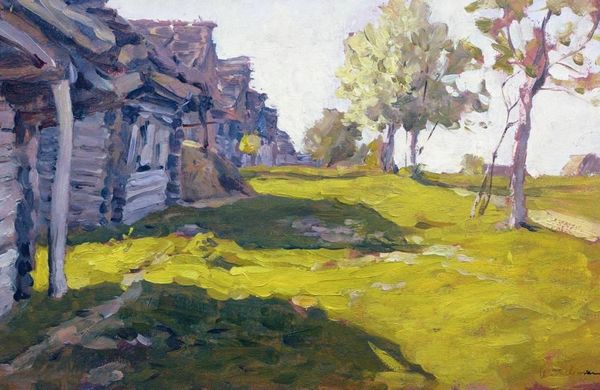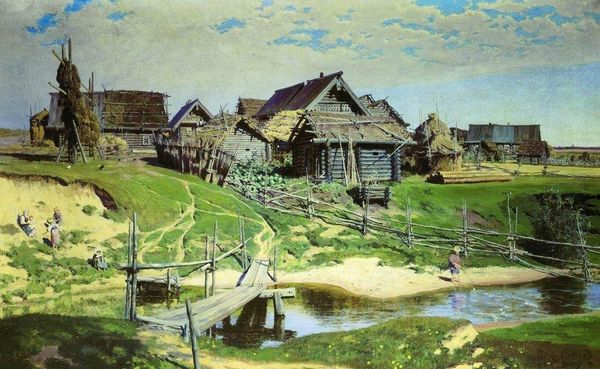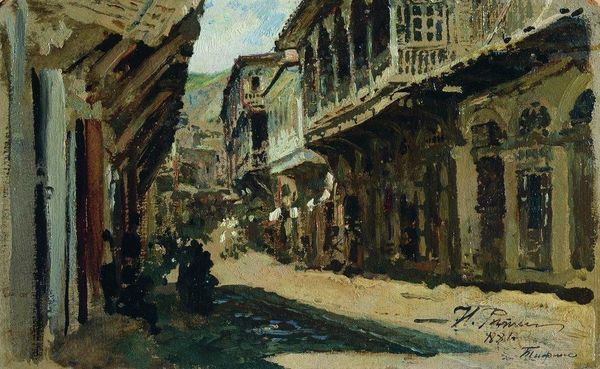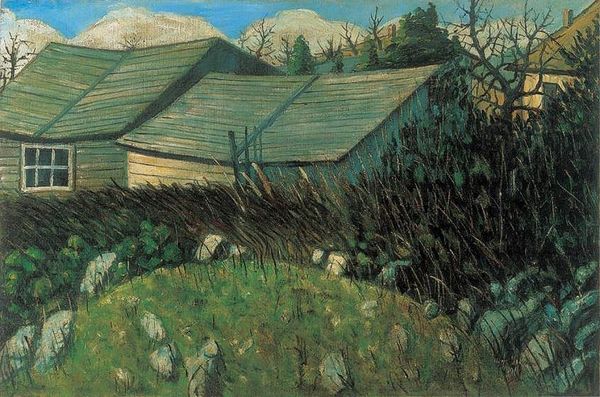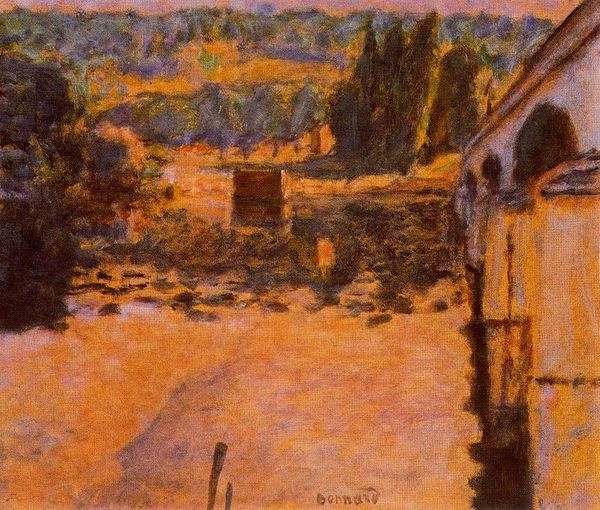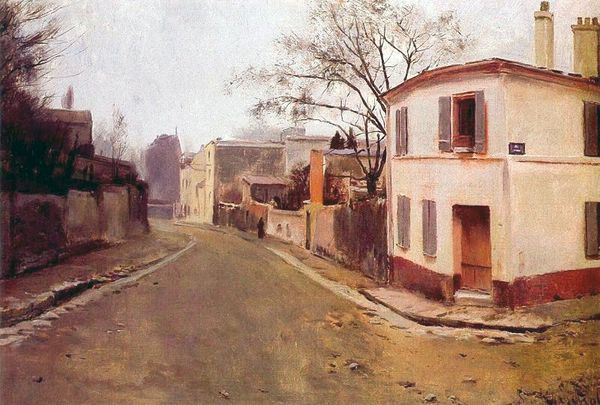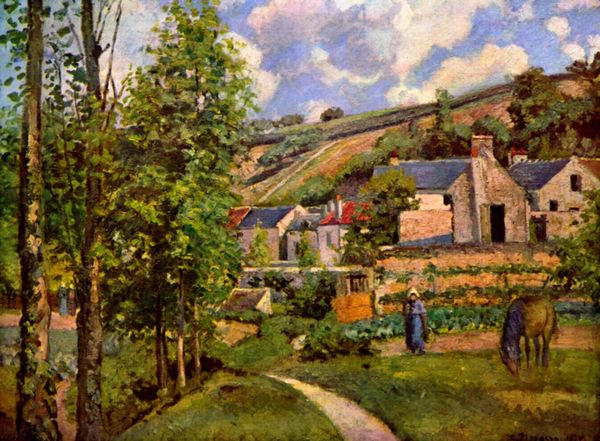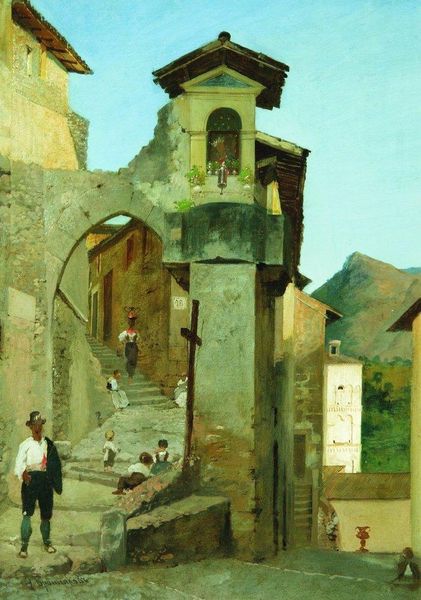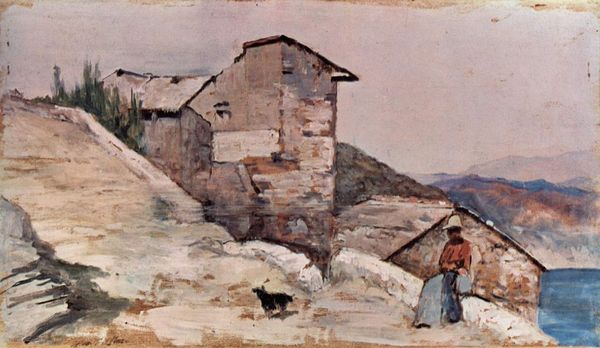
Copyright: Public domain
Editor: Here we have Isaac Levitan’s “View in Plyos,” painted in 1888, using oil on canvas. I am struck by how simple and bucolic it is. The green and browns create a familiar sense of peace, almost melancholic. What do you see in this piece? Curator: Beyond the pleasing landscape, consider how Levitan captures the *spirit* of Russia in a way that echoes through generations. Note how the traditional wooden architecture intertwines with the natural landscape. These buildings – how do they make you feel? Editor: I feel like they are nestled and grounded. The structures and nature coexist without disrupting each other. Curator: Precisely! This signifies more than a visual harmony. Plyos, like many rural Russian areas, embodies a cultural memory of self-reliance, of a life intimately connected to the earth. The unassuming architecture holds layers of meaning. Are you aware of any possible meaning? Editor: Maybe like the simple way of life that contrasts against the changing urban settings? Curator: Precisely. Levitan often portrayed this view as Russia began wrestling with modernization and industrialization. Do you believe there is some subtle criticism of industrialization? Editor: Hmm. It does seem like the artist made a deliberate choice to not portray factories or railroads. In some way the artist's bias makes it a powerful statement. Curator: Levitan masterfully immortalized Plyos and the rural way of life which became powerful symbols within Russian art. It encourages me to see layers of emotional significance in seemingly straightforward scenes. Editor: I never thought of landscape art having so much symbolism, and the way in which the painting makes a cultural statement. It changes the way I'll view landscape art forever.
Comments
No comments
Be the first to comment and join the conversation on the ultimate creative platform.
